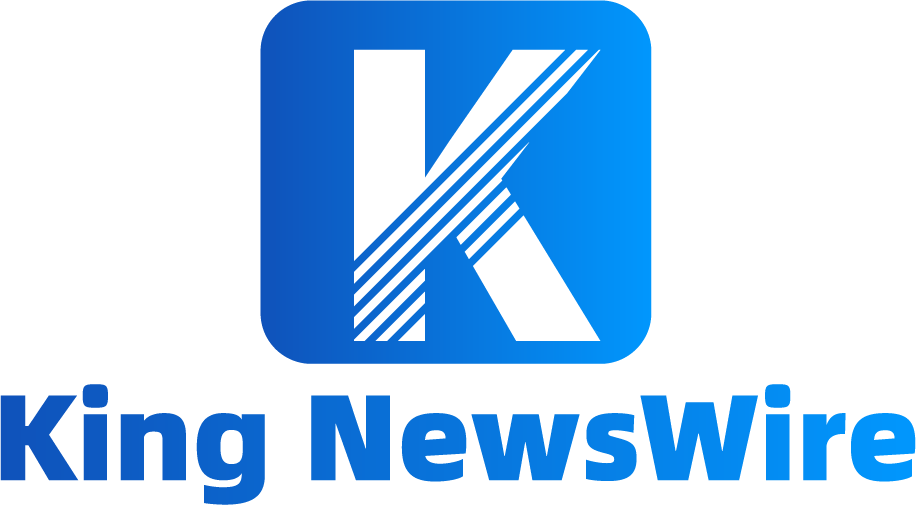- All Plans
- Yahoo Press Release
- Bloomberg Press Release + Yahoo Finance
- Business Insider Press Release
- Benzinga Press Release
- Digital Journal Press Release
- US Times Now Press Release
- AP News Press Release
- Yahoo Finance Press Release
- Street Insider Press Release
- MSN News Press Release
- USA Today Press Release
Enhancing Workflow: Techniques to Uncover and Address Business Process Inefficiencies

United States, 25th Jun 2024 – In the competitive business landscape, efficiency and productivity are crucial to maintaining a competitive edge. Business process inefficiencies can hinder growth, increase costs, and reduce overall productivity. Enhancing workflow by uncovering and addressing these inefficiencies is essential for optimizing operations and achieving long-term success.
This article explores techniques to identify and resolve inefficiencies in business processes, ensuring streamlined operations and enhanced productivity.
Understanding Business Process Inefficiencies
Business process inefficiencies refer to any aspect of a process that wastes time, resources, or effort without adding value. These inefficiencies can manifest in various forms, such as redundant steps, bottlenecks, poor communication, and outdated technology. Identifying and addressing these inefficiencies is key to optimizing workflows and improving overall business performance.
Techniques to Uncover Business Process Inefficiencies
1. Conduct a Comprehensive Process Audit
The first step in uncovering inefficiencies is to conduct a thorough audit of existing processes. This involves mapping out each step of the process, identifying key stakeholders, and documenting the flow of information and tasks.
a. Process Mapping
Create detailed process maps that visually represent each step in a business process. Use tools like flowcharts, swimlane diagrams, and value stream maps to highlight the sequence of activities, decision points, and handoffs. Process mapping helps identify redundant steps, bottlenecks, and areas where improvements can be made.
b. Stakeholder Interviews
Interview key stakeholders involved in the process to gain insights into their experiences and perspectives. Ask about challenges they face, areas where they see potential improvements, and any inefficiencies they have observed. This qualitative data can provide valuable context and help identify root causes of inefficiencies.
c. Data Collection and Analysis
Collect and analyze data related to the process, such as cycle times, error rates, and resource utilization. Use this data to identify patterns, trends, and anomalies that indicate inefficiencies. Quantitative analysis can help pinpoint specific areas that require attention.
2. Identify and Eliminate Redundant Steps
Redundant steps are activities that do not add value to the process and can be eliminated without impacting the desired outcome. Identifying and removing these steps can significantly improve efficiency.
a. Value Stream Mapping
Value stream mapping (VSM) is a lean management technique, created using a value stream map template that visualizes the flow of materials and information through a process. VSM helps identify steps that do not add value and highlights opportunities for streamlining. By focusing on value-added activities, businesses can eliminate waste and improve overall efficiency.
b. Process Simplification
Simplify complex processes by breaking them down into smaller, manageable components. Identify and remove unnecessary steps, streamline decision-making, and reduce handoffs. Simplified processes are easier to manage, monitor, and improve.
3. Address Bottlenecks
Bottlenecks are points in a process where the flow of work is restricted, leading to delays and reduced productivity. Identifying and addressing bottlenecks is crucial for optimizing workflows.
a. Bottleneck Analysis
Use bottleneck analysis to identify points in the process where work accumulates and slows down. Analyze the causes of these bottlenecks, such as resource constraints, skill gaps, or inefficient workflows. Addressing bottlenecks can involve reallocating resources, cross-training employees, or reengineering the process.
b. Capacity Management
Ensure that resources are allocated effectively to meet demand. Use capacity management techniques to balance workloads, optimize resource utilization, and prevent bottlenecks. This may involve adjusting staffing levels, scheduling work more efficiently, or investing in additional resources.
4. Improve Communication and Collaboration
Poor communication and collaboration can lead to misunderstandings, errors, and delays. Enhancing communication and fostering collaboration can improve process efficiency and overall productivity.
a. Centralized Communication Platforms
Adopt centralized communication platforms like Slack, Microsoft Teams, or Asana to facilitate seamless communication and collaboration. These tools enable instant messaging, file sharing, and project collaboration, reducing email overload and improving response times.
b. Regular Meetings and Check-Ins
Schedule regular team meetings and check-ins to discuss progress, address issues, and align efforts. Encourage open communication and foster a collaborative culture where team members feel comfortable sharing ideas and feedback.
c. Cross-Functional Teams
Promote collaboration with other departments by forming cross-functional teams. Cross-functional teams bring diverse perspectives and expertise, enhancing problem-solving and decision-making.
5. Leverage Technology and Automation
Technology and automation play a critical role in optimizing business processes. By automating repetitive tasks and leveraging advanced tools, businesses can improve efficiency and reduce the risk of errors.
a. Workflow Automation Tools
Invest in workflow automation tools that streamline tasks such as data entry, approval workflows, and document management. Tools like Zapier, Microsoft Power Automate, and Nintex can automate repetitive tasks, freeing up employees to focus on higher-value activities.
b. Integration of Systems
Integrate disparate systems to ensure seamless data flow and reduce manual effort. Use integration platforms to connect CRM, ERP, and other business systems, enabling real-time data access and improving decision-making.
c. Advanced Analytics and Reporting
Leverage advanced analytics and reporting tools to monitor process performance and identify areas for improvement. Tools like Tableau, Power BI, and Google Analytics provide insights into key performance indicators (KPIs) and help track progress against goals.
6. Foster a Culture of Continuous Improvement
A culture of continuous improvement encourages employees to identify inefficiencies and suggest improvements. This proactive approach drives ongoing optimization and enhances overall business performance.
a. Lean and Six Sigma
Implement Lean and Six Sigma methodologies to promote continuous improvement. Lean focuses on eliminating waste and maximizing value, while Six Sigma aims to improve quality and reduce variability. These methodologies provide structured approaches for identifying and addressing inefficiencies.
b. Employee Training and Development
Invest in regular training and development opportunities for employees. Equip them with the skills and knowledge needed to identify inefficiencies and implement improvements. Encourage a mindset of learning and growth.
c. Encourage Innovation
Create an environment that encourages innovation and experimentation. Allow employees to test new approaches, learn from failures, and implement successful strategies. Recognize and reward contributions to process improvement.
7. Monitor and Measure Performance
Continuous monitoring and measurement of process performance are essential for sustaining improvements and ensuring long-term success.
a. Key Performance Indicators (KPIs)
Identify and track KPIs that align with your business goals. Common KPIs include cycle time, error rates, customer satisfaction, and cost savings. Regularly review these metrics to assess process performance and identify areas for improvement.
b. Performance Dashboards
Use performance dashboards to visualize KPIs and monitor progress in real-time. Dashboards provide a comprehensive view of process performance, enabling quick identification of issues and timely interventions.
c. Regular Audits and Reviews
Conduct regular audits and reviews of business processes to ensure compliance with standards and identify inefficiencies. Use audit findings to implement corrective actions and continuous improvements.
Enhancing workflow by uncovering and addressing business process inefficiencies is crucial for optimizing operations and achieving long-term success. By conducting comprehensive process audits, eliminating redundant steps, addressing bottlenecks, improving communication and collaboration, leveraging technology and automation, fostering a culture of continuous improvement, and monitoring performance, businesses can streamline their operations and drive productivity.
Embracing these techniques not only enhances efficiency but also empowers employees to contribute to ongoing optimization efforts. As businesses continue to evolve, a commitment to continuous improvement will ensure that they remain competitive and responsive to changing market demands. By proactively identifying and resolving inefficiencies, businesses can unlock their full potential and achieve sustainable growth.
Media Contact
Organization: Zenphi
Contact Person: Zenphi Team
Website: https://zenphi.com/
Email: Send Email
Country: United States
Release Id: 25062413473
